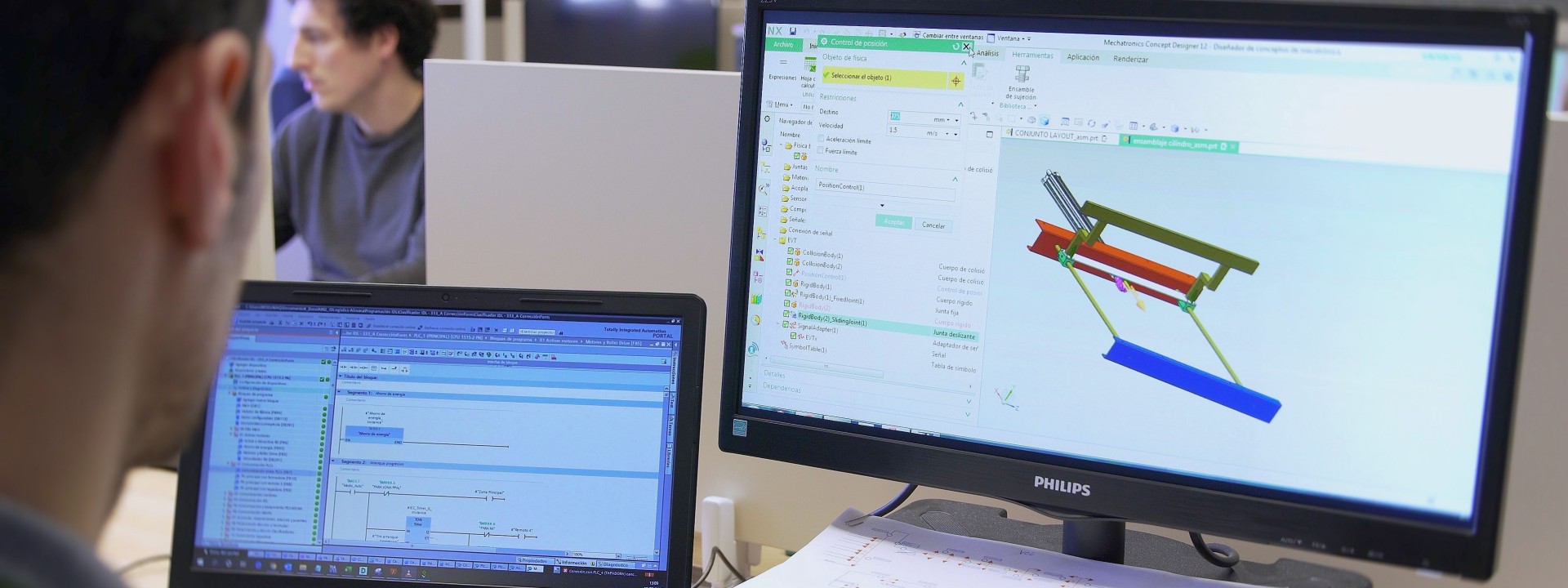
10 Jul Three times better: Logistics with the digital twin
We draws on the potential offered by digitalization and digital twins to ensure smooth supply chains and efficient processes. Workflows in a new logistics center in Ecuador were first simulated and then automated and digitalized. The impressive result: Capacity has been tripled.
Sort, store, retrieve, dispatch: At intervals measured in seconds, dozens of consignments and packages pass fully automatically through the impressive sorting system at the logistics center in the port city of Guayaquil, on Ecuador’s Pacific coast.
The state-of-the-art center belongs to Corporación El Rosado, a prominent retail company in Ecuador that supplies the country’s population with both domestic and imported goods, from toys to cleaning agents, fruit, and milk products.
Logistics chain as a success factor
One critical factor in the Group’s success is a powerful logistics system for supplying supermarkets, shopping centers, and grocery stores. The logistics center in Guayaquil ranks alongside other facilities of the same type around the world. With its state-of-the-art sorting system, it can turn around up to 12,000 packages every hour – three times the volume it was able to handle just a few years ago.
Leveraging optimized workflows to improve efficiency
This improvement in performance was planned and realized by Spanish technology firm Modumaq, which specializes in areas like solutions for the logistics sector. “El Rosado set us the task of substantially improving their processes in Guayaquil,” says Alfonso Flores, CEO of the Modumaq Group. “That meant we had to automate their workflows and optimize the business in its entirety.”
Triple the workflow
To expand capacity in Guayaquil to the planned 12,000 handling processes per hour, the Modumaq project team headed by Jonatan Pascual installed a powerful cross-belt sorter. Pascual is CTO and founder of software specialist ATM, which became part of Modumaq in 2019. The sorter receives orders from both the cross-docking area, where consignments are transferred directly from one goods vehicle to another, and the pick-to-belt zone in the central warehouse.

Previously, these sorting and loading processes were performed by hand at El Rosado, but now it’s done by a fully automated system. As a result, the entire workflow is much more efficient and much higher-performing. The cross-belt sorter processes 8,000 packages per hour, although the system is designed for up to 12,000 packages per hour, or three times its previous capacity.
Automation ensures efficiency and reliability
Pascual notes that when it came to automating the new sorting system, Modumaq drew on a combination of proven industrial components and state-of-the-art tools: “We’ve been using automation components from Siemens for many years now. For the project in Guayaquil we therefore only considered Siemens systems, because we wanted to ensure we’d be able to implement a totally reliable and powerful solution in which all the systems worked smoothly together.”
We opted for Siemens because we need a partner who’ll support us with a complete portfolio of products that are top-quality and absolutely reliable.
Jonatan Pascual, ATM Technical Director, Grupo Modumaq
Modumaq was supported by Siemens Approved Partner Dimel, which specializes in areas like digitalization and the Industrial Internet of Things (IIoT). Together the project flexible, powerful, and reliable automation solution that uses controllers like the Simatic S7-1500 and S7-1200.
All the information comes together in the central control panel, where it’s visualized on a Simatic HMI Touch Panel. Local control panels are installed at the individual stations, and the field signals connect with Simatic ET 200SP systems via Profinet or AS-Interface. All the components are networked via powerful Scalance Industrial Ethernet Switches.
Simulation assists with commissioning
For the solution to achieve the desired level of performance in day-to-day operations, Modumaq optimized the automation process in advance using simulation. The performance of the three controllers was tested under realistic conditions with Simatic S7-PLCSim. “That allowed us to confirm that our system met the customer’s requirements,” observes Pascual.
Intuitive operation
The result is a success: Not only was the entire solution installed and put into operation with no problems, but as Pascual notes, “Thanks to its intuitive operation, users can easily begin to work with the new system immediately.” The system also offers benefits for reporting and maintenance. For El Rosado, the investment paid for itself in less than three years through improved performance and lower operating costs.
Showcase for digitalization
“We’d like to build on this project and show how our customers can benefit from digitalization,” says Pascual. To make this possible, Modumaq has built its own showroom in Toledo to show its customers how processes can be optimized using the digital twin. Modumaq uses the Solid Edge and NX programs to develop and simulate complete solutions. “These programs let us create systems tailored to suit every customer need and simulate and verify the solution in advance,” Pascual affirms.
The project in Guayaquil is just the beginning. In the future, we want to use digital twins for all our projects.
Alfonso Flores, CEO Grupo Modumaq

